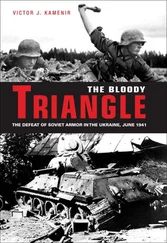The number of victims is staggering. In its 2003 trafficking report, the U.S. State Department points out that “no country is immune from trafficking” and estimates that approximately 800,000 to 900,000 people are trafficked across international borders worldwide. This figure doesn’t include internal trafficking, which some observers estimate would raise the number to more than two million. Sadly, the report adds that “human trafficking not only continues but appears to be on the rise worldwide” and that the overwhelming majority of victims are women and children.
It also states that trafficking brutalizes women and children, “exposing them to rape, torture, and to HIV/AIDS and other sexually transmitted and infectious diseases, violence, dangerous working conditions, poor nutrition, and drug and alcohol addiction. Increasing numbers of adults and children trafficked into prostitution as well as street children are contracting HIV/AIDS.”
The international bazaar for women is nothing new—Asian women have been the basic commodity for years, and armies of men still flock to Bangkok and Manila on sex junkets. Over the past three decades the world has witnessed four distinct wavesof trafficking for sexual exploitation. This latest traffic from Eastern and Central Europe has been dubbed “the Fourth Wave,” and the speed and proportion are truly staggering. Just a decade ago, these women didn’t even register on the radar screen. Today, they represent more than 25 percent of the trade.
The first wave of trafficked women came from Southeast Asia in the 1970s and was composed mostly of Thai and Filipino women. The second wave arrived in the early 1980s and was made up of women from Africa, mainly Ghana and Nigeria. The third wave, from Latin America, followed right behind and comprised women mostly from Colombia, Brazil and the Dominican Republic. So it’s not that the world has suddenly realized that its women are being kidnapped, sold and raped. The only difference is that today it’s flourishing as never before.
The Natashas is an investigation into the latest wave, to find out how it happened and why it continues to thrive. It examines the triggers—the push-pull factors, the supply and the demand—and the wall of complacency, complicity and corruption that has allowed the trade to explode.
In my thirty years as a journalist I’ve come face to face with scandals, corruption, greed and crime of all kinds. I’ve seen tragedy of monumental proportions—the desperation of famine, the ravages of war. I’ve witnessed the loss of life and hope in the Middle East and Africa… in Afghanistan, Ethiopia, Somalia and Iran. Yet never before have I been as struck by the senseless disregard for human dignity as I have been these last two years while researching this book.
To me, The Natashas is about a generation of lost girls. Virtually every city, town and village in Eastern and Central Europe has seen some of its girls and women disappear. Incredibly, they weren’t lost to illness or war or to the tragedy of famine or natural disaster. On the contrary, they have become expendable pawns in the burgeoning business of money, lust and sex. What is most disturbing is that trafficking is a manmade disaster that can be prevented. Yet the world continues to ignore the plight of these women and girls. The time has come to stop the traffic.
My life is no longer my own.
—LIDA, AN ORPHAN FROM ROMANIA
EVERY DAY, scores of young women throughout the former East Bloc are lured by job offers that lead to a hellish journey of sexual slavery and violence. Despite the barrage of warnings on radio and TV, in newspapers and on billboards, desperate women continue to line up with their naiveté and applications in hand, hoping that, this time, they might just be in luck. Newspaper ads in Kyiv, Bucharest, St. Petersburg, Moscow, Odessa, Minsk and Prague offer destitute women a path out of grinding poverty—a chance at a new start—with no qualifications required. These ads promise a world of relative comfort, especially when compared with conditions at home. Positions
are offered around the world as waitresses, models, nannies, dishwashers and maids. The monthly salaries reach $2500, which, for the vast majority, is more than they would ever make in years. Some ads even appear to be officially sanctioned, bearing logos of the American Stars and Stripes or the Canadian Maple Leaf. Others are decked out in the enticing tricolors of Germany, Belgium, the Netherlands, Italy or France.
Bogus recruiters offer prospective job seekers a “complete package” for positions abroad. Typically, they don’t require prior work experience, and they almost always seek young, preferably single, women. “Girls: Must be single and very pretty. Young and tall. We invite you for work as models, secretaries, dancers, choreographers, gymnasts. Housing is supplied. Foreign posts available. Must apply in person,” an ad in a Kyiv newspaper read. The arrangements often include training, travel documents and airfare, at no cost to the applicants. All they need to do is show up! What these fresh recruits don’t know is that in virtually 95 percent of these cases, the jobs being promised do not exist.
Many of the ads are placed by seemingly legitimate employment agencies that have hung out shingles in Russia, Romania, the Czech Republic and Ukraine. Some agencies have gone so far as to set up “career day” booths at universities in Russia, promising profitable work abroad. Most of these firms, or intermediaries, are nothing more than hunting grounds for criminal networks involved in the lucrative industry of sex. For more than a decade, unscrupulous recruiters have snared upward of 175,000 women a year from the former Soviet republics and delivered them as sacrificial lambs to traffickers, pimps and brothel owners in foreign lands.
Women are sometimes recruited in groups, and thinking there is safety in numbers, they enthusiastically sign on. One group of women from Lviv, Ukraine, was offered jobs as housekeepers in the Czech Republic. Once they crossed into the Republic they were sold to a pimp for $500 each and forced into prostitution along the infamous Highway E-55 near the Czech–German border. In another case, an entire dance troupe of young Ukrainian women was conned by an “impresario” promising a five-city European tour. The tour seemed legitimate. They had even been presented with “contracts.” They ended up locked in a German apartment and sold into the trade.
In the world of sex trafficking, not all women fall victim to the spin of phony employment agencies and bogus job ads. The first link in the trafficking chain is more often a relative, a neighbor or a friend of a friend. An acquaintance, adept at gaining trust, will approach a young woman’s family with an offer to help her land a good job abroad. Every year, tremendous numbers of girls are sucked in by the ruse.
La Strada, a nongovernmental organization in Kyiv that assists trafficked women from Ukraine, has documented numerous cases of deception by acquaintances and individuals in trusted positions in the community. The culprits have included teachers, a local psychologist, the wife of a policeman and the daughter of a village priest.
Tanya, who comes from a small town in the Luhansk region of eastern Ukraine, was one victim of this kind of deception.
Abandoned by her father at the age of four, she set out when she was twenty to find work to help her mother care for an invalid brother. Though she had completed technical school, there was no work to be found since most of the plants and factories in the town had shut down. The situation was desperate. There were times when her family survived on bread and water alone. According to La Strada, Tanya, who was described as “slim and pretty,” was offered an incredible opportunity when a friend of her mother’s proposed a job abroad in 1998. The woman told Tanya that wealthy Arab families in the United Arab Emirates were hiring maids. These jobs were allegedly paying up to $4000 a month. Tanya couldn’t believe her luck.
Читать дальше












